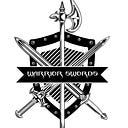5 Facts about the Wakizashi
Introduction
The wakizashi, often overshadowed by its larger counterpart, the katana, holds its own significance in the realm of samurai culture. Its name literally translates to “side insertion,” indicating its positioning on the samurai’s side. Despite its smaller stature, the wakizashi served various purposes, from close combat to ceremonial acts such as seppuku. Let’s delve into five fascinating facts about the wakizashi, shedding light on its rich history, versatility, and cultural importance.
“The wakizashi isn’t just a sword; it’s a testament to centuries of craftsmanship and tradition, wielding its own story in every curve of its blade.”
1) The Two Faces of Wakizashi: Ko-wakizashi and O-wakizashi
The wakizashi comes in two distinct types: the ko-wakizashi and the o-wakizashi. The ko-wakizashi, or “short wakizashi,” boasts a shorter blade, ranging from 30 to 45 cm, making it ideal for confined spaces and swift maneuvers. It served as a backup weapon for skilled samurai, seamlessly complementing the katana during combat. On the other hand, the o-wakizashi, or “long wakizashi,” with blades exceeding 45 cm, blurred the line between wakizashi and katana. Lower-ranked samurai often wielded it as a primary weapon for its concealability, highlighting the wakizashi’s adaptability to diverse combat scenarios.
2) It’s Been Forged For More Than 600 Years
Originating in 15th or 16th century Japan, the wakizashi has withstood the test of time, evolving from low-carbon steel to high-carbon steel for enhanced durability. Its legacy spans centuries, embodying a piece of history passed down through generations. The transition to high-carbon steel signifies continuous improvement, reinforcing its status as a timeless artifact steeped in tradition and craftsmanship.
3) A Paired Companion: The Wakizashi and the Samurai’s Arsenal
Samurai warriors were known for wielding two swords — the katana and the wakizashi — in a style called daisho. While the katana excelled in powerful strikes, the wakizashi offered agility and precision in confined spaces. Together, they formed a formidable duo, reflecting the samurai’s strategic prowess and adaptability in combat.
4) The Government Regulated Blade Length
During the 1800s, the Japanese government intervened to regulate sword production, including the wakizashi’s blade length. This initiative aimed to standardize the sword-making process, ensuring uniformity and order within the industry. By imposing regulations, the government facilitated consistency and quality control, contributing to the preservation of sword-making traditions.
5) More Than Just a Weapon: The Wakizashi in Swordsmanship
Beyond its role as a weapon, the wakizashi holds cultural significance in Japanese martial arts such as kenjutsu, kendo, and iaido. Skilled practitioners showcase its versatility and finesse, mastering techniques tailored to its unique attributes. Despite no longer being utilized in combat, the wakizashi remains an integral part of martial arts training, preserving its legacy and contributing to the enrichment of Japanese cultural heritage.
Conclusion
In conclusion, the wakizashi symbolizes versatility, tradition, and resilience within samurai culture. Its enduring legacy spans over 600 years, marked by advancements in craftsmanship and government regulation. As a complementary weapon to the katana, the wakizashi embodies the samurai’s strategic prowess and adaptability in combat. Moreover, its significance extends beyond the battlefield, resonating in martial arts disciplines and cultural practices. By understanding the wakizashi’s multifaceted role, we gain insight into the rich tapestry of Japanese history and tradition.
“From the whispers of history to the clash of blades, the wakizashi stands as a silent witness to the evolution of samurai culture, embodying the essence of tradition and innovation.”
